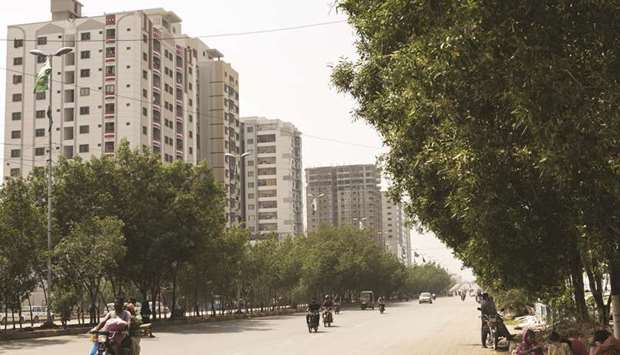The international financial institution in a statement issued here said the PHFP would support the government of Pakistan’s vision and strategy for housing development.
Estimates of annual new demand range between 400,000 and 700,000 housing units with only about 100,000 to 350,000 formal units being built annually, while the magnitude varies, all estimates indicate that formal supply covers less than 50% of new demand.
“Various estimates place the total housing backlog at 9mn to 10mn units (of which 3.5mn to 4mn units in urban areas), increasing approximately 400,000 units per annum),” the World Bank said in a recent report.
“This project will spur the development of housing mortgage market in the country and make housing finance affordable and reachable to many Pakistanis,” said Illango Patchamuthu, World Bank Country Director for Pakistan, in the official handout.
Patchamuthu added that the beneficiaries would include women and low-income groups through improved incentives for eco-friendly homes.
“The PHFP will extend financial and technical assistance to Pakistan Mortgage Refinancing Company (PMRC), the Planning Commission, and other institutions to increase availability of mortgage financing for households,” the global lender said adding nearly a third of country’s population does not own homes and this pressure is rising with growing demand.
The PMRC was launched to assist the development of housing finance in the country and aid financial institutions for extending housing loans in much more quantum by addressing their liquidity issues through refinancing facilities.
The SPB said this enhanced availability coupled with low markup rate regime, has increased the housing finance portfolio of Pakistan significantly to Rs58 billion, a growth of more than 9% in a year. Despite its immense importance, most of the housing finance is arranged through personal sources while only limited number of housing transaction are arranged through formal financial sector.
Korotoumou Ouattara, senior financial sector economist World Bank, said Pakistan’s mortgage finance to Gross Domestic Product ratio of 0.25 per cent was extremely low compared to the South Asia average of 3.4%.
“There is a significant market gap across all segments of the population,” Ouattara said.
She said the creation of the PMRC marks an important step in achieving the government’s objective to improve access to housing finance in the country.
“The project will address the liquidity constraints of lenders, support capital market development, and create an enabling environment for a sound national housing policy,” the World Bank official said.
The bank said the project had an innovative approach including crowding in commercial financing for homeownership and providing greater incentives for women to become home owners.
“It also incentivises people to build energy efficient and green homes and adopt climate and disaster-resilient construction designs and materials,” the statement added.
It said the PHFP was financed by the International Development Association, the World Bank’s fund for the poor, with a maturity of 25 years, including a grace period of five years.
The World Bank in its Update Project Report, issued last year, estimated housing shortage in Pakistan to be around 10mn units, while saying that the deficit continues to grow, particularly in the urban areas.
“While data to capture the existing stock and flux of housing units are limited, existing evidence suggests an existing backlog in housing units that is raising rapidly as the annual number of new adequate units cover less than half of the annual new demand,” the report said.

